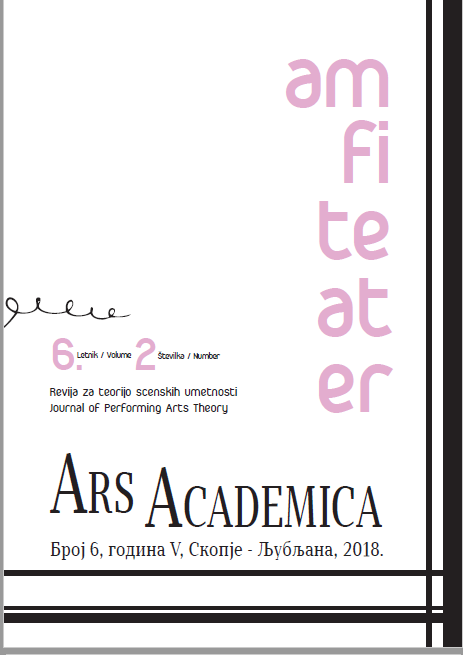From Yugoslav Ballet to Post-Yugoslav Contemporary Dance: Permutations in Collaborative Practices between Macedonian and Slovenian Dance Scenes
From Yugoslav Ballet to Post-Yugoslav Contemporary Dance: Permutations in Collaborative Practices between Macedonian and Slovenian Dance Scenes
Author(s): Aldo Milohnić, Sonja Zdravkova-DžeparoskaSubject(s): Theatre, Dance, Performing Arts, Cultural history, Evaluation research, Transformation Period (1990 - 2010), History of Communism, Sociology of Art
Published by: Факултет за Драмски Уметности - Скопје
Keywords: ballet; dance; Slovenia; Macedonia; collaborative practices; dance festivals;
Summary/Abstract: Our aim in this text is twofold: first, to offer a preliminary overview of cooperative activities between Slovenian and Macedonian ballet and dance artists, national institutions and non-governmental organisations in the last 25 years, that is, in the period of independence of both states, with a short excursus into the time preceding that period; and second, to offer a kind of a prima vista analysis of the main achievements as well as obstacles in those collaborative practices. In the period of its existence the Yugoslav Federation provided not only material support to professional theatre institutions, but also stimulated cultural collaboration among federal republics. Especially non-verbal forms of artistic expression, such as ballet and dance, were adequate communicators in a multinational and multilingual state as was the Socialist Yugoslavia. The official cultural policies of the newly established states declaratively (i.e. in ratified bilateral agreements) advocated the preservation of cultural connections that existed from the era of the former Yugoslavia. However, the level of intercultural exchange presupposed in these bilateral agreements is rather modest and unambitious, especially in the field of dance. The processes of dissolution of the former Yugoslavia and the establishing of the independent states of Macedonia and Slovenia produced significant changes in the field of dance and opera theatre. The main characteristics of these changes were, on the one hand, a rapid diminishing of the collaboration between national ballet and opera institutions, and on the other hand, a gradual increasing of cooperation between non-governmental organisations active in the creation, promotion and exchange of contemporary dance productions.
Journal: Ars Academica
- Issue Year: 2018
- Issue No: 6
- Page Range: 86-111
- Page Count: 26
- Language: English

